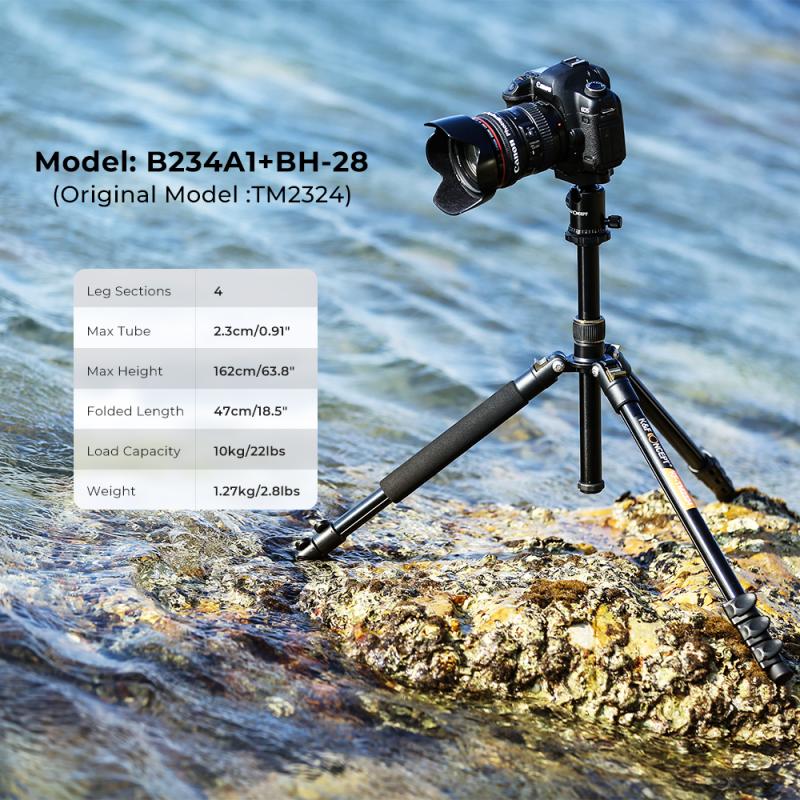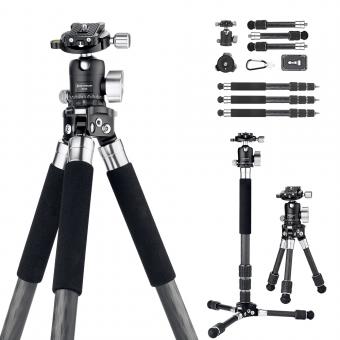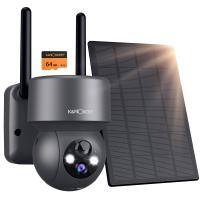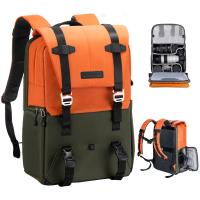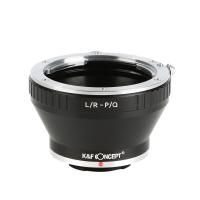How Much Travel Tripod Weigh ?
The weight of a travel tripod can vary depending on the specific model and brand. On average, travel tripods tend to weigh between 2 to 5 pounds (0.9 to 2.3 kilograms). However, there are lighter options available that weigh as little as 1 pound (0.45 kilograms) and heavier ones that can weigh up to 8 pounds (3.6 kilograms). The weight of a travel tripod is an important consideration for photographers who prioritize portability and ease of carrying during their travels.
1、 Weight capacity of travel tripods
The weight of a travel tripod can vary depending on the model and materials used. Generally, travel tripods are designed to be lightweight and portable, making them ideal for photographers on the go. The weight of a travel tripod can range from as light as 1 pound (0.45 kg) to around 5 pounds (2.27 kg).
Manufacturers often use lightweight materials such as carbon fiber or aluminum to reduce the overall weight of the tripod. Carbon fiber tripods are known for their strength and durability while being significantly lighter than aluminum tripods. However, they tend to be more expensive.
When considering the weight of a travel tripod, it is important to also consider its weight capacity. The weight capacity refers to the maximum weight the tripod can support without compromising stability. Most travel tripods have a weight capacity ranging from 5 to 20 pounds (2.27 to 9.07 kg). It is crucial to choose a tripod that can support the weight of your camera and any additional equipment you may use, such as lenses or accessories.
It is worth noting that the weight capacity of a travel tripod is not the only factor to consider when determining its stability. The design, leg locks, and center column also play a role in providing stability and preventing any unwanted vibrations or movement.
In recent years, there has been a trend towards lighter and more compact travel tripods without compromising stability. Manufacturers are constantly innovating and introducing new models with improved weight capacity and portability. It is always recommended to check the specifications and read reviews to find the best travel tripod that suits your needs.
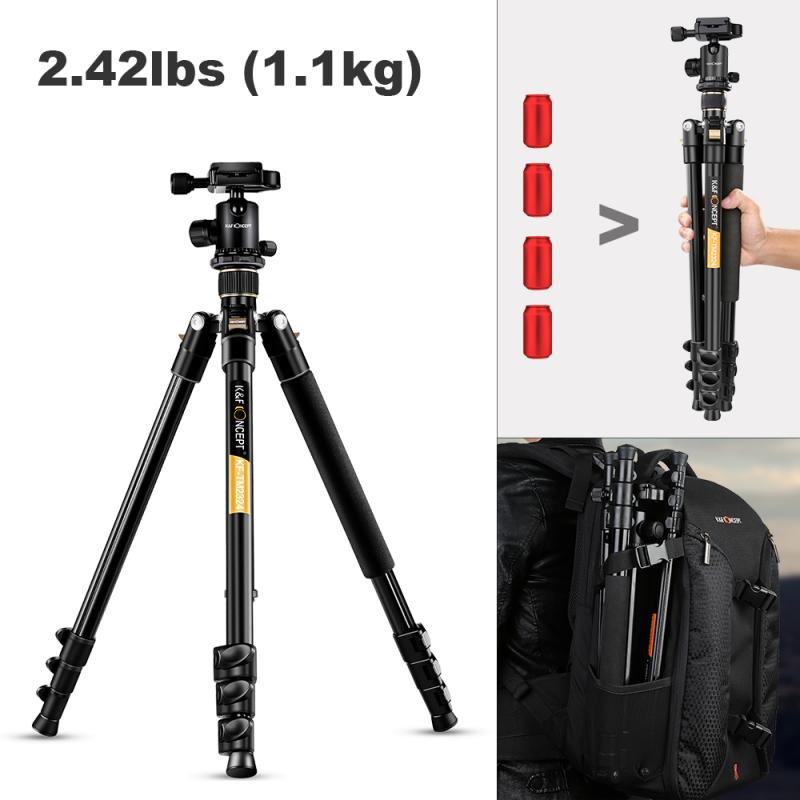
2、 Lightweight materials used in travel tripods
Travel tripods are designed to be lightweight and portable, making them ideal for photographers and videographers on the go. The weight of a travel tripod can vary depending on the materials used in its construction. However, the general aim is to keep the weight as low as possible without compromising stability and durability.
Lightweight materials such as carbon fiber and aluminum alloys are commonly used in the construction of travel tripods. Carbon fiber is known for its high strength-to-weight ratio, making it an excellent choice for reducing the overall weight of the tripod. It is also resistant to temperature changes and vibrations, ensuring stability during use. Aluminum alloys, on the other hand, offer a good balance between weight and cost. They are lightweight, durable, and can withstand rough handling.
The weight of a travel tripod can range from as little as 1 pound (0.45 kg) to around 5 pounds (2.27 kg), depending on the specific model and brand. Some manufacturers have managed to create incredibly lightweight travel tripods that weigh less than 2 pounds (0.9 kg) while still providing excellent stability and functionality.
It is important to note that while lightweight materials are used in travel tripods, there may be trade-offs in terms of load capacity and stability. Extremely lightweight tripods may not be able to support heavy camera equipment or withstand strong winds and vibrations. Therefore, it is crucial to consider the intended use and equipment requirements when choosing a travel tripod.
In conclusion, travel tripods are designed to be lightweight and portable, with the weight varying depending on the materials used. Lightweight materials such as carbon fiber and aluminum alloys are commonly used to reduce weight without compromising stability. The weight of a travel tripod can range from 1 to 5 pounds, with some models weighing less than 2 pounds. However, it is important to consider the trade-offs between weight and load capacity/stability when selecting a travel tripod.

3、 Average weight range of travel tripods
The weight of a travel tripod can vary depending on the specific model and brand. However, on average, travel tripods tend to be lightweight and compact for easy portability. The weight range of travel tripods typically falls between 1 to 3 pounds (0.45 to 1.36 kilograms).
Manufacturers have been continuously working on reducing the weight of travel tripods without compromising stability and durability. They achieve this by using lightweight materials such as carbon fiber or aluminum alloys in the construction of the tripod legs and components. Carbon fiber tripods are generally lighter than aluminum ones, but they can also be more expensive.
In recent years, there has been a trend towards even lighter travel tripods, with some models weighing as little as 0.5 pounds (0.23 kilograms). These ultra-lightweight tripods are designed for photographers and videographers who prioritize portability and are willing to sacrifice some stability for convenience.
It is important to note that while a lighter tripod may be easier to carry, it may not be as stable in windy conditions or when using heavy camera equipment. Therefore, it is crucial to consider the weight capacity and stability of a travel tripod before making a purchase.
Ultimately, the weight of a travel tripod depends on the specific model and the materials used in its construction. It is recommended to research and compare different options to find a tripod that strikes the right balance between weight, stability, and functionality for your specific needs.
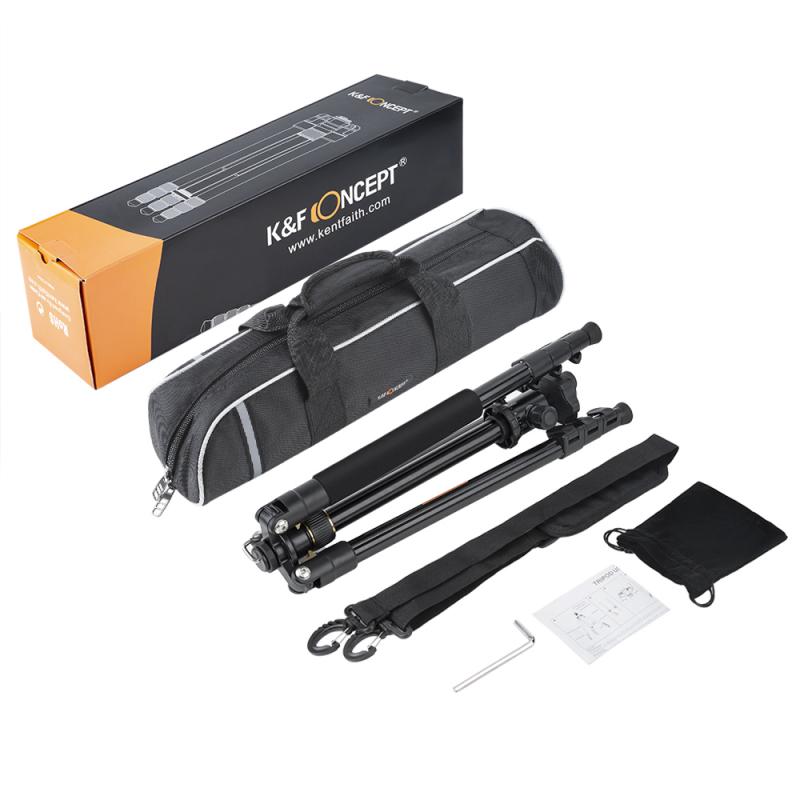
4、 Impact of tripod weight on portability and stability
The weight of a travel tripod can vary depending on the brand, model, and materials used. On average, a travel tripod can weigh anywhere between 1.5 to 4 pounds (0.7 to 1.8 kilograms). However, it is important to note that the weight of a tripod can have a significant impact on its portability and stability.
In terms of portability, a lighter tripod is generally more convenient to carry around, especially when traveling long distances or hiking to remote locations. It is easier to pack and won't add much weight to your overall gear. This is particularly important for photographers or videographers who are constantly on the move and need to minimize the weight of their equipment.
On the other hand, the weight of a tripod also affects its stability. A heavier tripod tends to be more stable, especially in windy conditions or when using heavy camera equipment. The added weight helps to reduce vibrations and provides a solid base for capturing sharp images or smooth videos. However, it can be cumbersome to carry and may limit the flexibility of shooting angles.
In recent years, manufacturers have been focusing on developing lightweight tripods that offer a good balance between portability and stability. They have introduced innovative materials such as carbon fiber, which is lighter than traditional aluminum but still provides excellent stability. These lightweight tripods often come with features like adjustable leg angles, quick-release mechanisms, and compact folding designs, making them highly portable without compromising on stability.
Ultimately, the choice of tripod weight depends on the specific needs and preferences of the photographer or videographer. It is essential to consider the intended use, the weight of the camera equipment, and the shooting conditions to determine the ideal tripod weight for optimal portability and stability.
